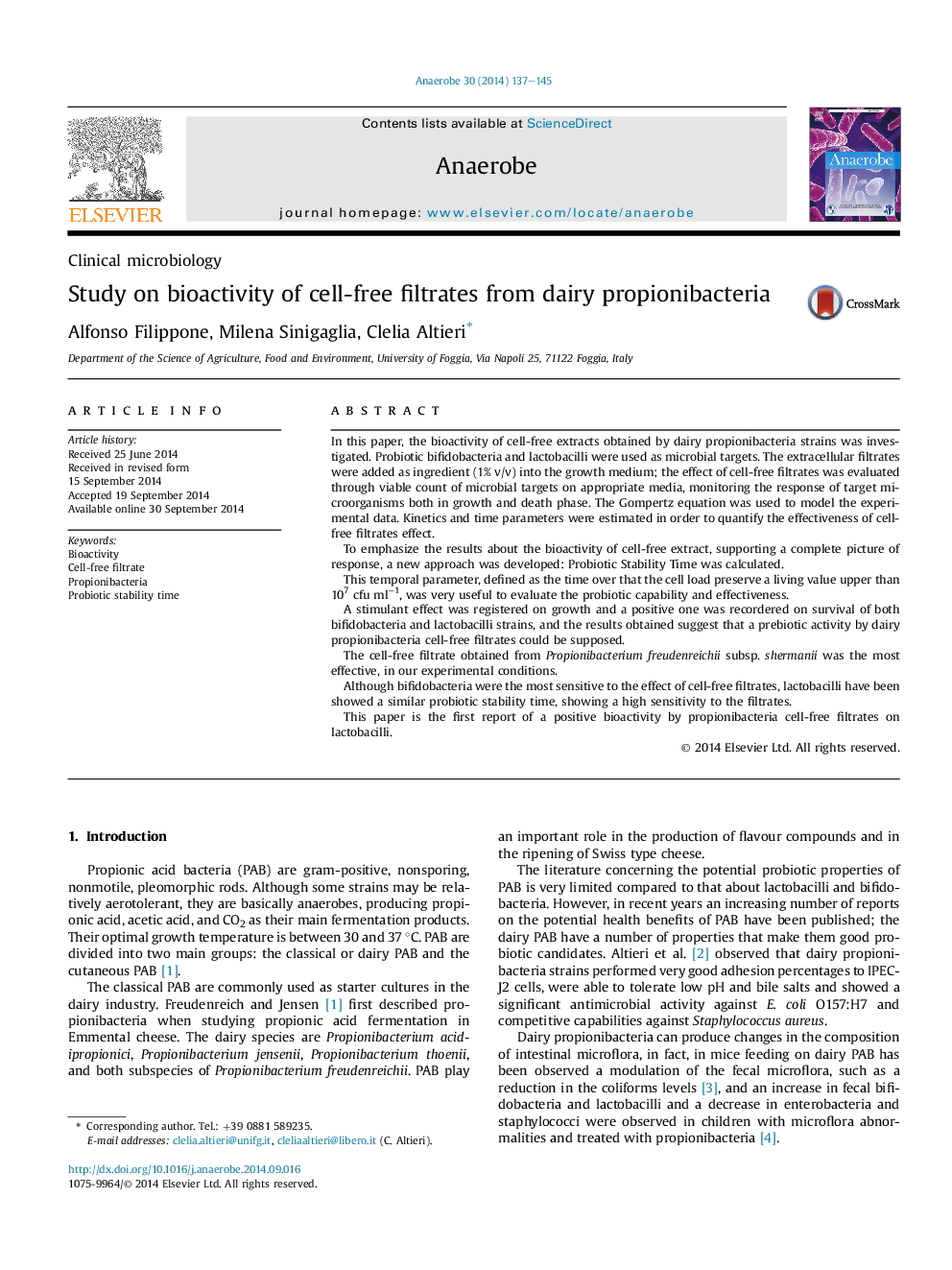| Article ID | Journal | Published Year | Pages | File Type |
|---|---|---|---|---|
| 3395027 | Anaerobe | 2014 | 9 Pages |
•Dairy propionibateria are able to produce a bioactive cell-free filtrate.•Propionibacteria cell-free filtrate stimulates bifidobacteria and lactobacilli growth.•Propionibacteria cell-free filtrate slows down bifidobacteria and lactobacilli death.
In this paper, the bioactivity of cell-free extracts obtained by dairy propionibacteria strains was investigated. Probiotic bifidobacteria and lactobacilli were used as microbial targets. The extracellular filtrates were added as ingredient (1% v/v) into the growth medium; the effect of cell-free filtrates was evaluated through viable count of microbial targets on appropriate media, monitoring the response of target microorganisms both in growth and death phase. The Gompertz equation was used to model the experimental data. Kinetics and time parameters were estimated in order to quantify the effectiveness of cell-free filtrates effect.To emphasize the results about the bioactivity of cell-free extract, supporting a complete picture of response, a new approach was developed: Probiotic Stability Time was calculated.This temporal parameter, defined as the time over that the cell load preserve a living value upper than 107 cfu ml−1, was very useful to evaluate the probiotic capability and effectiveness.A stimulant effect was registered on growth and a positive one was recordered on survival of both bifidobacteria and lactobacilli strains, and the results obtained suggest that a prebiotic activity by dairy propionibacteria cell-free filtrates could be supposed.The cell-free filtrate obtained from Propionibacterium freudenreichii subsp. shermanii was the most effective, in our experimental conditions.Although bifidobacteria were the most sensitive to the effect of cell-free filtrates, lactobacilli have been showed a similar probiotic stability time, showing a high sensitivity to the filtrates.This paper is the first report of a positive bioactivity by propionibacteria cell-free filtrates on lactobacilli.
